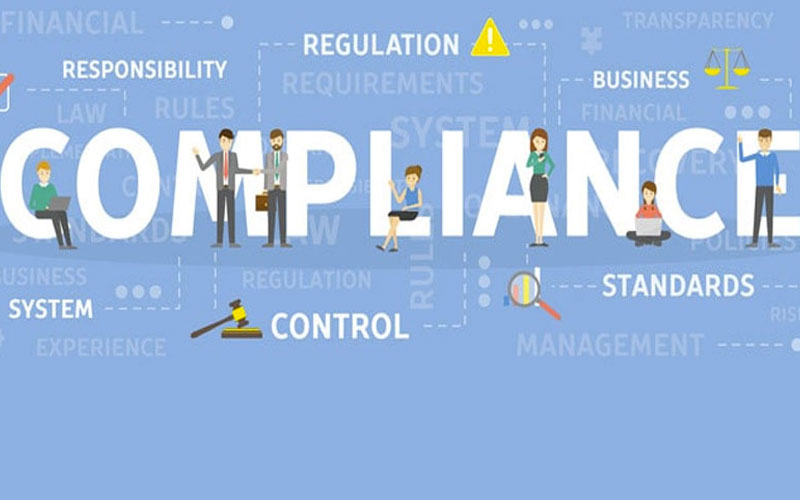Making sure your website is ADA compliant will provide an easy way for individuals with a disability to find the information they seek about your firm.
More importantly, ADA compliance is also important to avoid a lawsuit or government action.
A recent article by Financial Advisor IQ reviews several class action lawsuits filed against UBS, Edward Jones, and other financial firms.
Some corporations have found themselves under fire because they are more likely to pay a settlement than fight a lawsuit.
The cases state that the companies have violated the Americans with Disabilities Act by failing to design, construct, maintain, and operate websites that are fully accessible to and independently usable by millions of other visually impaired persons who are protected under that federal law.
Attorneys began filing these class action lawsuits in 2018 because the Department of Justice withdrew a previously announced “advance notice of rule making” setting guidelines for website accessibility. The guidelines would have clearly laid out rules for website owners to follow in order to assure ADA compliance. More ADA claims targeting financial advisory firms are on the horizon.
Serving Your Disabled Website Visitors
Aside from the threat of a lawsuit there are very good reasons to make sure your website is accessible to disabled visitors.
There are very good reasons to make sure your website is accessible to disabled visitors.
Most of us can hardly conceive of life without the internet. At the click of a mouse, or swipe of a finger, almost any information can be within our reach; that is, if we can use a mouse… and we can see the screen… and hear audio when it’s used. In other words it works great if we don’t have a disability of any kind.
Understanding how people with disabilities use your website and the frustrations they feel when they cannot access content should give you some good reasons to make sure your website is as accessible as reasonably possible.
The major categories of disability types are:
- Visual including blindness, low vision and color blindness
- Hearing including deafness and hard-of-hearing
- Cognitive including learning disabilities, distractibility, and the inability to remember or focus on large amounts of information
- Motor including the inability to use a mouse, slow response time, limited fine motor control
Credit WebAim
It’s usually not too difficult to get your website up to WCAG 2.0 standards for disabled users.
Luckily it’s not that hard to get your website up to standards for disabled users. The low-hanging fruit of all accessibility is providing alternative text on every image or graphic on your website. The alternative text will be read out loud for blind visitors or presented as text to users that are deaf.
Color contrast between the background and text need to be high enough to ensure the text can be read for individuals with vision impairments. Text size can be adjusted easily in web browsers, but text embedded in graphics needs to be large enough to read without requiring a “zoom”, because zoomed images become blurry.
Make Sure Your Website is in Compliance with WCAG 2.0
The Web Content Accessibility Guidelines (WCAG) are the guidelines currently used to determine if your website is ADA compliant, and which level of conformance it meets. WCAG 2.0 is the latest specification.
Here’s an Accessibility Checker that will test your website. Keep in mind that it might present results that are “false positives” and not really accessibility issues. A web developer acquainted with accessibility (like us) can help you interpret the results.
If you’re interested, check out our Website Accessibility Testing Service.
Here’s a checklist of eleven key principles of accessible design and coding practices.
1. Does your website provide appropriate alternative text?
“Alternative text” provides an alternative to photos and graphics on web pages. It is helpful for the blind who rely on screen readers that speak the content of the website.
2. Does your website provide appropriate document structure?
HTML elements such as headings, lists, and tables provide meaning to web pages. These elements also facilitate keyboard navigation within the page.
3. Does your website provide forms with proper labels and tab settings for screen readers?
Every form element needs a label that is associated with the correct form element. Your visitor should be able to submit the form and easily recover from any errors, such as the failure to fill in all required fields.
4. Does your website provide descriptive links?
Links on your web pages should make sense if the link text is read by itself. Visitors using screen readers may choose to read only the links on a page. Certain phrases like “click here” and “more” must be avoided when possible.
5. Does your website provide transcripts for audio and video?
Videos and audio need captions and transcripts. Providing audio transcripts and captions can be difficult and the size of your audience should be considered before going to this expense.
6. Does your website provide accessibility within linked PDF files and Microsoft Word documents?
In addition to all of the other principles listed here, PDF documents and other non-HTML content must be as accessible as possible. If you can’t make a PDF or Word document accessible, consider putting the content on a plain web page. PDF documents can include tags within the content to make them more accessible to screen readers.
7. Does your website allow users to skip repetitive elements such as the top navigation menu on each page?
Providing a method that allows users to skip the top navigation is usually accomplished by providing a “Skip Navigation” link at the top of the page which jumps the user to the main content of the page. The Skip Navigation link is only visible to screen readers.
8. Does your website rely on color alone to convey meaning?
Use color to enhance comprehension but don’t use color alone to convey information since it won’t help color blind visitors.
9. Does your website provide content that is clearly written and easy to read?
Although this is subjective, it’s always best to write clearly, use clear fonts, and organize content using headings and lists when necessary.
10. Does your website provide a reliable experience without JavaScript?
Where possible, ensure that JavaScript event handlers are device independent – for example components of your website shouldn’t require the use of a mouse to hover over and area to convey content. In addition, make sure that your page does not rely on JavaScript to function.
11. Does your website follow up to date design and coding standards?
Using plenty of white space and larger fonts allow your visitors to browse your website without having to make adjustments to font size within their web browser. Current HTML 5 standards are more robust and provide better accessibility with tags that denote navigation, content and footers.
The Naked Website Test
The Naked Website Test removes all of the styling (CSS) from your web page, and then makes sure your website is readable and usable. It shows the web page without the style coding that makes it pretty and nicely formatted.
The Naked Website Test removes all of the styling from your web page, and then makes sure your website is readable and usable.
The idea behind the Naked Website Test came from Ben Robertson’s article “How to get started with website accessibility“.
The importance of this test is to show you visually what a disabled user would be getting from your website. For blind visitors using a screen reader, the website without styles shows what the screen reader will be saying, and the order that the screen reader will be reading.
Headings will be emphasized and links will be spoken as “Link” with the link text spoken directly after.
This quick example will show you exactly what we’re talking about. Here is one of our demo websites without styles applied.
And here’s the website with all of the styles and formatting.
The article mentioned above shows how you can check any of your web pages using the Naked Website Test or you can use our Website Accessibility Testing Service to see how your website performs without it’s styles applied.
This list presents almost all current website accessibility issues. Some of the items above are more important and easier to accomplish than other. By updating your website where it falls short in ADA compliance, you will ensure greater accessibility of your web content to visitors with disabilities.
Most accessibility changes can be implemented without the need to rebuild your current website. We can provide estimates based on our Website Accessibility Test results.



